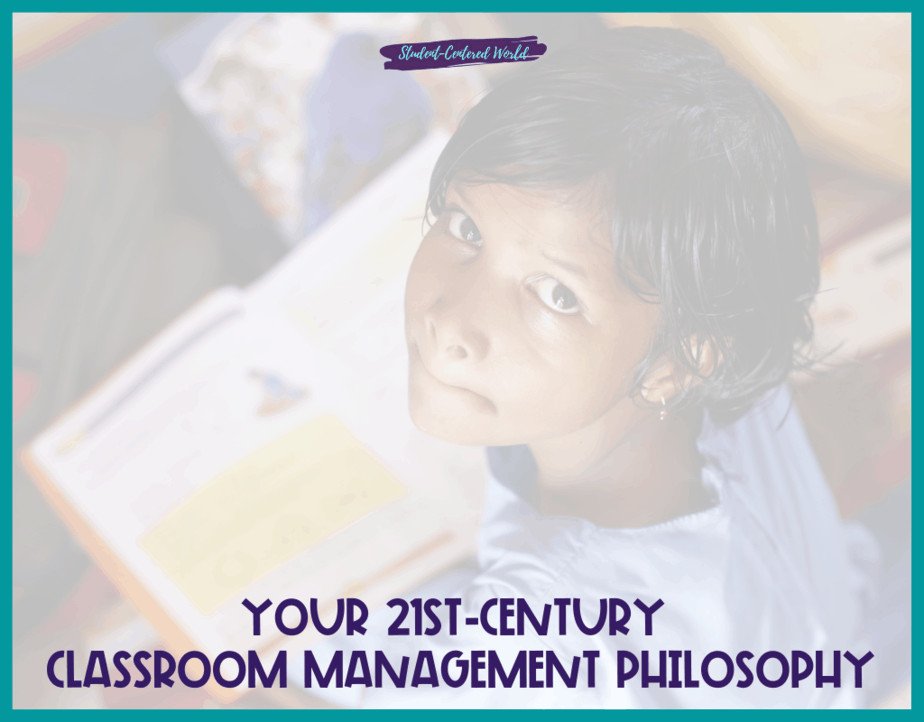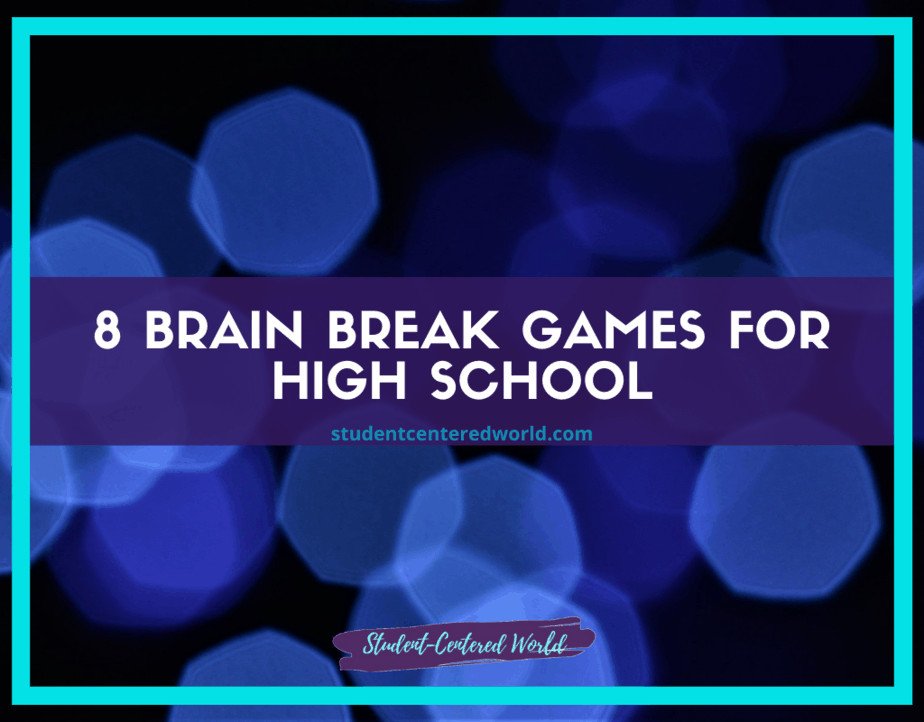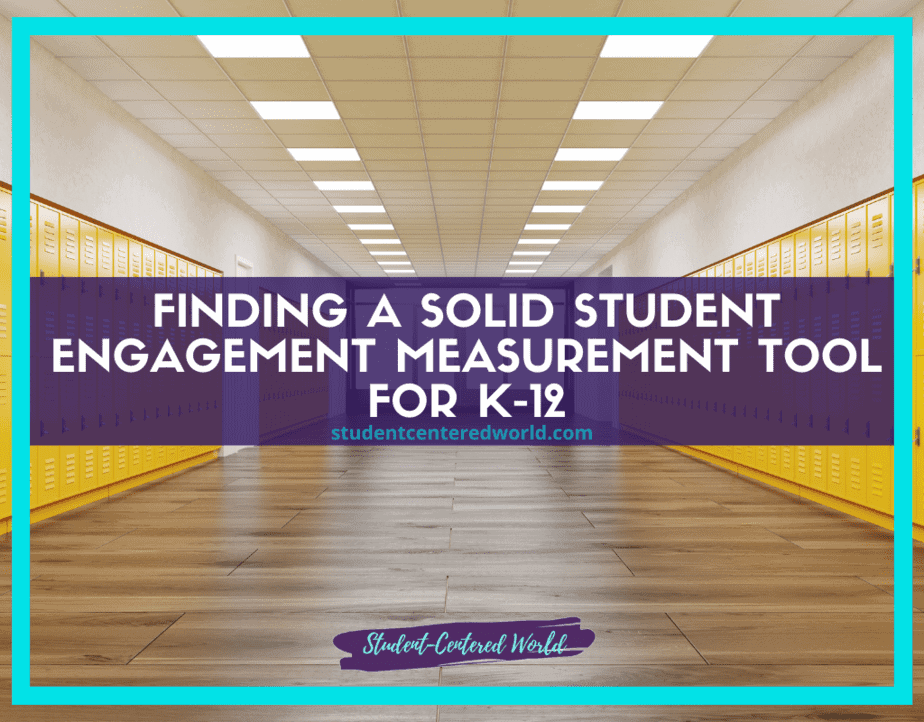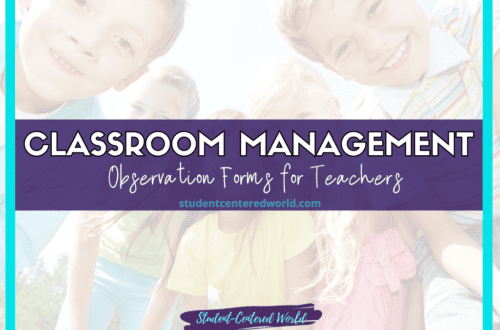Your Practical Classroom Management Philosophy for 21st-Century Happy Minds
All teachers are expected to have a classroom management philosophy, but what does this actually mean (and what should it look like in a 21st-century classroom)?
The answer to that question depends on three things: the teacher’s purpose, the learners’ needs, and a good understanding of how young people develop in a digital age. In other words, classroom management is about building positive relationships with students from whom you expect high levels of engagement.
This looks drastically different in today’s classroom as opposed to the ones from even 10 years ago.
We are taught when learning about the classroom management philosophy that there is an expectation that students sit quietly and do work from “bell to bell”. Though I would agree that work from “bell to bell” (minus brain breaks) is still relevant, in a student-centered classroom where they are collaborating and exploring and getting EXCITED about what they are doing, it just isn’t realistic that this would be a quiet environment.
There is much more classroom management happening than first meets the eye, and embracing this is a huge piece of a 21st-century classroom management philosophy.
In its simplest forms, one of the most “radical” things about a thriving classroom environment that meets the needs of our current learners is that it is a noisy classroom…and that’s okay!
This is a scary concept for a lot of teachers. There is a misconception that being loud means a lack of control and that your classroom management philosophy is shot. In many cases, that is certainly true. But in a truly student-centered environment, anyone who is curious about the noise comes to take a look for themselves to see all the action that is taking place in the classroom.

(This post may contain affiliate links that won’t change your price but will share some commission. As an Amazon Associate, I earn from qualifying purchases. Please read our disclosure policy for more information.)
Of course, make sure there is an understanding amongst your students if you have thin walls or can be a disturbance to other classes around you. A student-centered classroom isn’t an opportunity to be rude to your colleagues. But there are a variety of ways to make sure your students are keeping it at a dull roar (a noise meter, as a very simple example) while keeping your classroom management philosophy intact.
Honing in On Your Personal Classroom Management Philosophy
To develop your own classroom management philosophy, start by considering the key elements that will shape your approach. Your philosophy of discipline should focus on creating a safe environment that fosters mutual respect and promotes positive behaviors. Begin by setting clear expectations and using positive reinforcement as essential tools for encouraging desired behavior. Recognize and respect cultural differences and individual backgrounds in your classroom, as this will help create a diverse and inclusive classroom community.
An effective teacher’s classroom management plan should be built on best practices and informed by your personal experiences. Emphasize open communication with your students and involve them in class meetings to discuss any behavior issues, fostering a problem-solving atmosphere. Draw inspiration from well-known discipline models like Linda Albert’s “assertive discipline” and William Glasser’s “choice theory” (ads) to shape your philosophy statement. Be mindful that good classroom management ultimately contributes to students’ learning experiences and academic success.
As you define your personal classroom management philosophy, consider specific examples that align with your own beliefs and values. Your management style should prioritize the most important thing: creating a positive learning environment where students feel a sense of community and have a voice. Share your ideas with colleagues and school principals, and don’t be afraid to reach out to experienced educators or mentors for guidance, as they can provide valuable insights.
Remember that the role of the teacher goes beyond lesson plans and teaching methods; it includes maintaining discipline in the classroom, addressing inappropriate behavior, and guiding students’ behavior in a challenging environment. Maintain a positive attitude and pay attention to body language, as these non-verbal cues play a crucial role in classroom management.
In your classroom procedures, consider personal examples, supplemental materials, and the use of positive consequences to reinforce good behavior. Develop your own set of rules and engage students in this process, allowing them to have a say in classroom management, as this promotes ownership and a sense of responsibility. Just as in a well-managed classroom, always keep your ultimate goal in mind: to create an ideal classroom that upholds academic integrity and facilitates a positive learning experience for all students.
Why a Noisy Classroom is Okay
I am not saying it is a free-for-all. The classroom activities need to be carefully crafted so that even though the students are up and moving and talking (sometimes loudly), there is a purpose to them. If you’re encouraging flexible seating and student choice, you need to expect that there is going to be sound.
You will have a loud classroom. You need to be okay with that.

To boot in my classroom, I always had music playing on top of it all. My room always looked like a party, which to some, might look like it “isn’t supposed to”. However, if they take a few minutes to come in and look around (I encourage the concept of #observeme), they will realize that the students are completing more engaging work with a deeper understanding than if they were sitting quietly…the noisy classroom just means they’re learning.
I had a colleague who was very interested in how I ran my “loud classroom” peeked her head in one day when it sounded like all-out hysteria in there. I had a class of 30 and they were all loud…but they were good kids and worked hard…and fairly early on in the semester, they bought into student-centered learning.
Her question, with a smirk, was “Are any of them actually working?!
I smiled and brought her around. They were making time capsules to represent events from the 1970s. I had her pass by each group and they explained to her what they were making. In detail, they showed her what the artifact was, why they decided to make it, and what it represented… other than me asking them to explain what they were doing, they rattled off all that information without me prompting them to do so.
It’s chaos, but it’s organized chaos!
Think of the world we live in. When the public school system was first created, it was an industrial model to train students for the industrial world. Think of a traditional classroom and it resembles that of a factory. Everyone sits in a row, quietly does what they’re told, and completes the same assignment in the same way at the same time. John Baker wrote a great article in the Huffington Post about this concept. I think the most relevant thing he says in the article is this:
Life in the industrial economy was typically viewed as a series of discrete segments: school, work, and retirement. But this thinking is no longer viable as we have entered the era of lifelong learning. Facts taught in school today can be obsolete within a few years. Employees must constantly reinvent their skill sets in order to stay employable. Employers recognize they need to be increasingly self-sufficient in helping their employees keep their skill sets up-to-date.
Why Today’s Classroom is Different
Take a look at what Business Insider said would be the best jobs of the future back in 2014. The industrial model of education simply would not benefit these types of jobs. They are almost all hands-on or critical thinking based.
Having an active student-centered learning environment and a loud classroom (that is encouraged by your classroom management philosophy) is the best way to prepare our students for the workforce, which is the sole purpose of education at every level.
We are in a mad rush of change. I have mentioned it before, but to say it again, we are preparing our students currently for jobs that don’t exist yet.
Truly….think back to just a few years ago. How many social media managers did you know? Uber drivers? Air BnB hosts?
Things that are commonplace today were just coming into existence a mere decade ago. Imagine what is to come in the decade ahead of us. This article from the Huffington Post, written by Craig and Marc Kielburger, sums it up so perfectly:
But consider this: just ten years ago, ‘social media manager’ or ‘mobile app developer’ would have seemed like imaginary job titles to most. With the accelerating pace of social and technological change, the World Economic Forum estimates that 65 percent of children today will end up in careers that don’t even exist yet.
65%?! This, even more, solidifies that the argument of “but we’ve always done it this way” is not only outdated but completely irrelevant. How can we continue doing what we’ve always done if the outcome needs to be completely different for 65% of the population we serve?
We need to do things differently. Your classroom management philosophy must reflect this.

Our students need to be active and engaged, and we need to encourage a loud classroom that is full of action and engagement. We need to be certain they are gaining the soft skills that are necessary in the world that they are not necessarily getting naturally as generations past have.
Generation Z and Generation Alpha are learning differently than previous generations….we need to make sure we are giving them the best possible experiences to prepare them for the real world.
Reflecting on Student Learning in Your Classroom Management Philosophy
As we all learned, there are three pieces to an accurate classroom management philosophy: students, teachers, and behavior. You need to determine what the responsibility is of each in order to create that plan. If you are going to teach your students how to be productively engaging, then your plan needs to reflect how that will work for each stakeholder partaking in a lesson.
The focus needs to be on building those relationships so the students feel safe in taking risks and speaking out to participate effectively. They also need to know the boundaries of that risk-taking. While we want our students to indulge in the conversation and activities that we prepare for them, we also don’t want them to dominate the classroom environment or squash other students’ opportunities to partake.
It is important to take all of this into consideration. Classrooms that turn into a free-for-all when attempting a student-centered model do not have a defined classroom management philosophy in place: the teacher is just throwing spaghetti at the wall to see what will stick. When a defined plan is in place, students learn their roles and responsibilities to themselves and each other within the confines of the classroom environment and thus true learning can occur.
Here are 3 quick-start ideas for you in creating your plan:
- Create a character education program to go along with the classroom rules. Get your students in on it so they have ownership of these expectations and can enforce them in each other when necessary. If you want things done, let the kids do it!
- Make sure you know your role: Are you the facilitator or monitor? The leader or dictator? You need to know these things and help each student adopt that same perspective.
- Create a “rule of 3”: When a kid is having an off-task moment, remind them that they have three seconds before you will redirect their attention toward your expectations for behavior. It might be fast, but do it every time so they know you are serious about this and not just picking on them. If they can’t snap out of it within three seconds, then redirection is necessary.
Stop Driving the Teacher Struggle Bus
Are you struggling with student engagement, apathy, or keeping your class on track?
💫💫 There’s hope! 💫💫
Join my free teacher workshop “Choosing Choice” and in just 60 minutes, you’ll craft a practical plan to revitalize your teaching. Discover the magic of student choice in boosting engagement, gain quick implementation ideas, and explore strategies for year-long success.
Unlike overwhelming workshops, my approach guides you in real-time, providing more classroom options, reducing stress, and giving you more personal time.
Plus, you’ll earn a 1-hour professional development certificate and have 7 days of access.
Don’t miss this chance to transform your teaching; click below to secure your spot now!
This article was originally published on May 24, 2018






